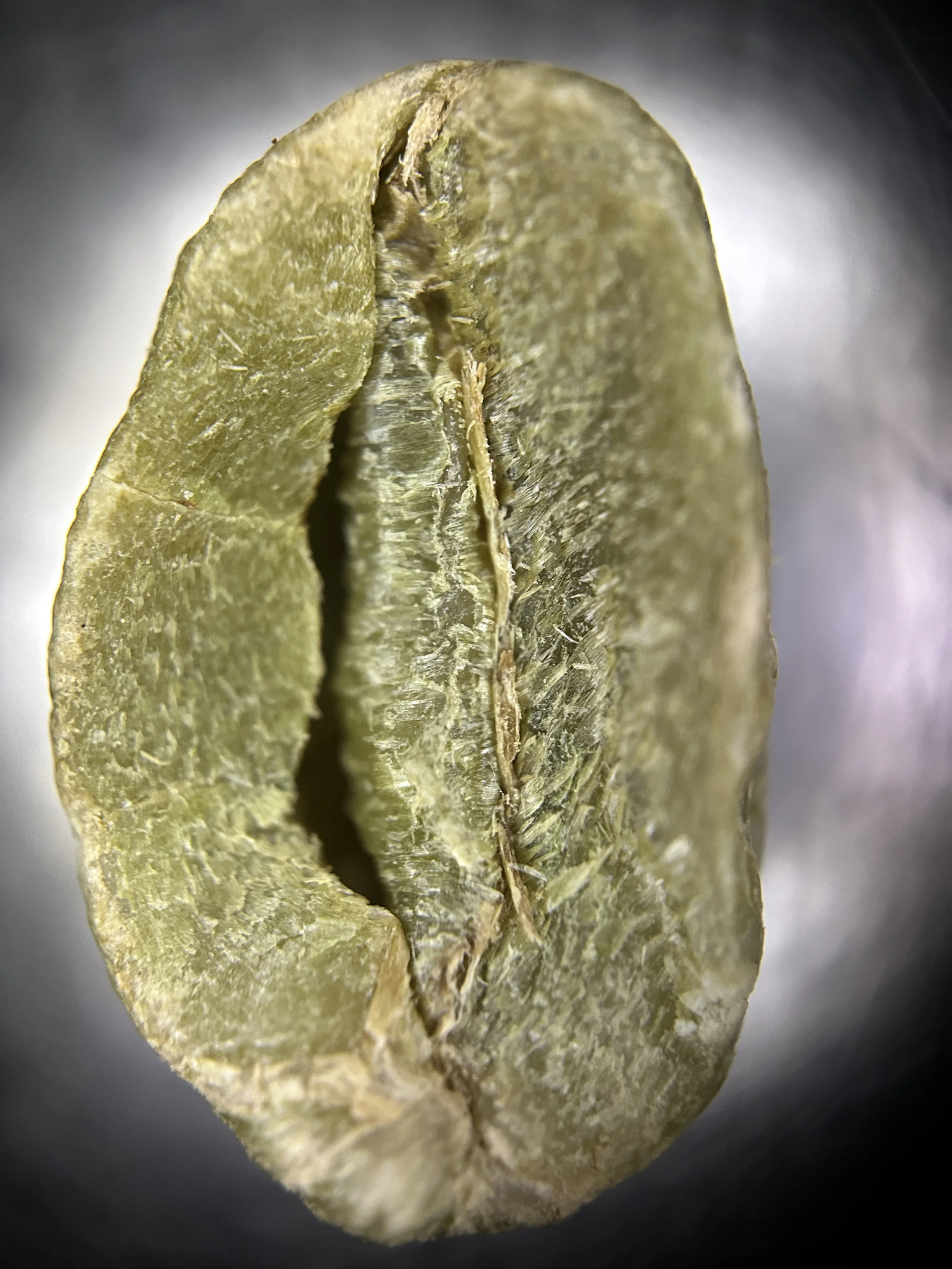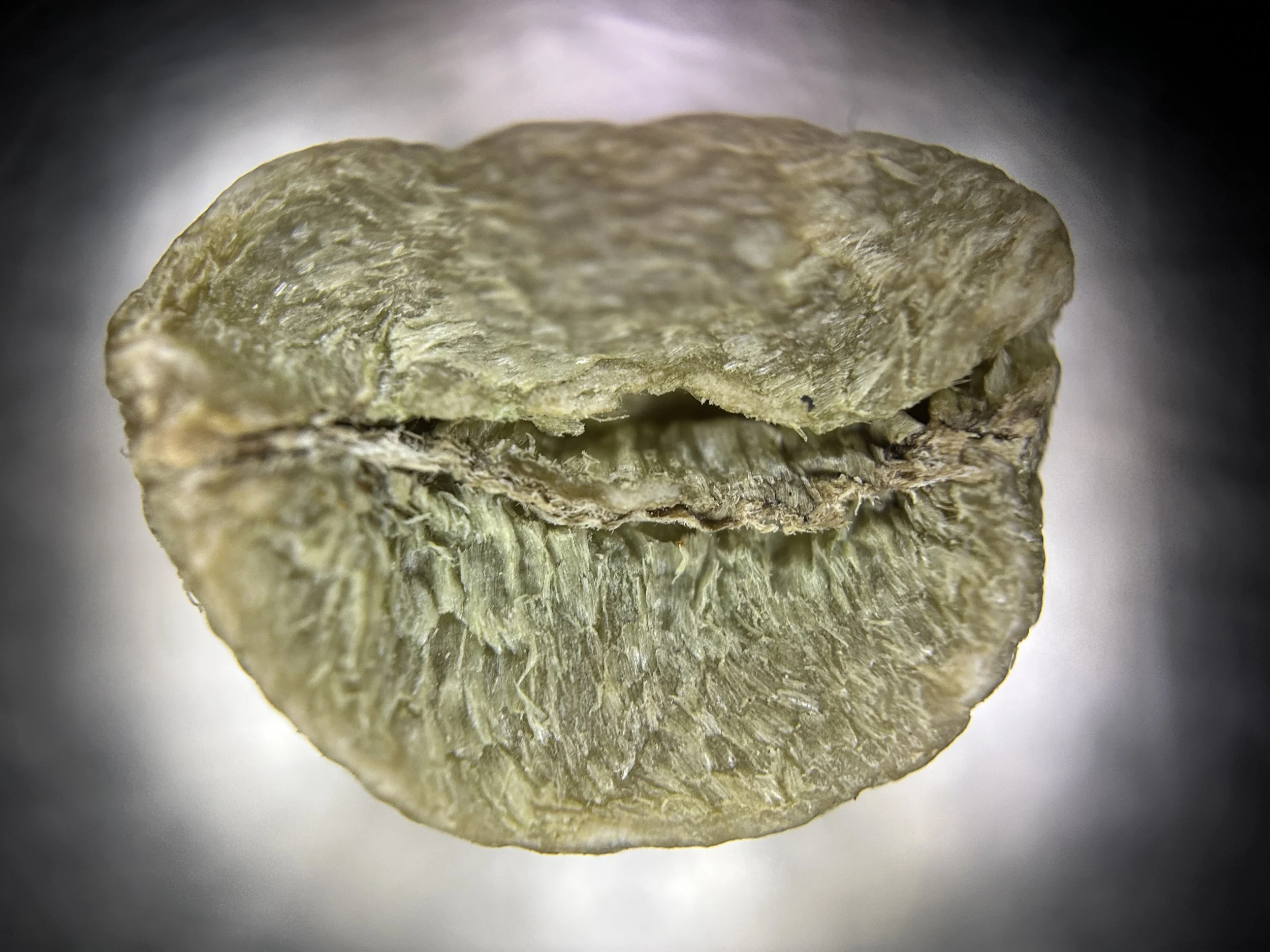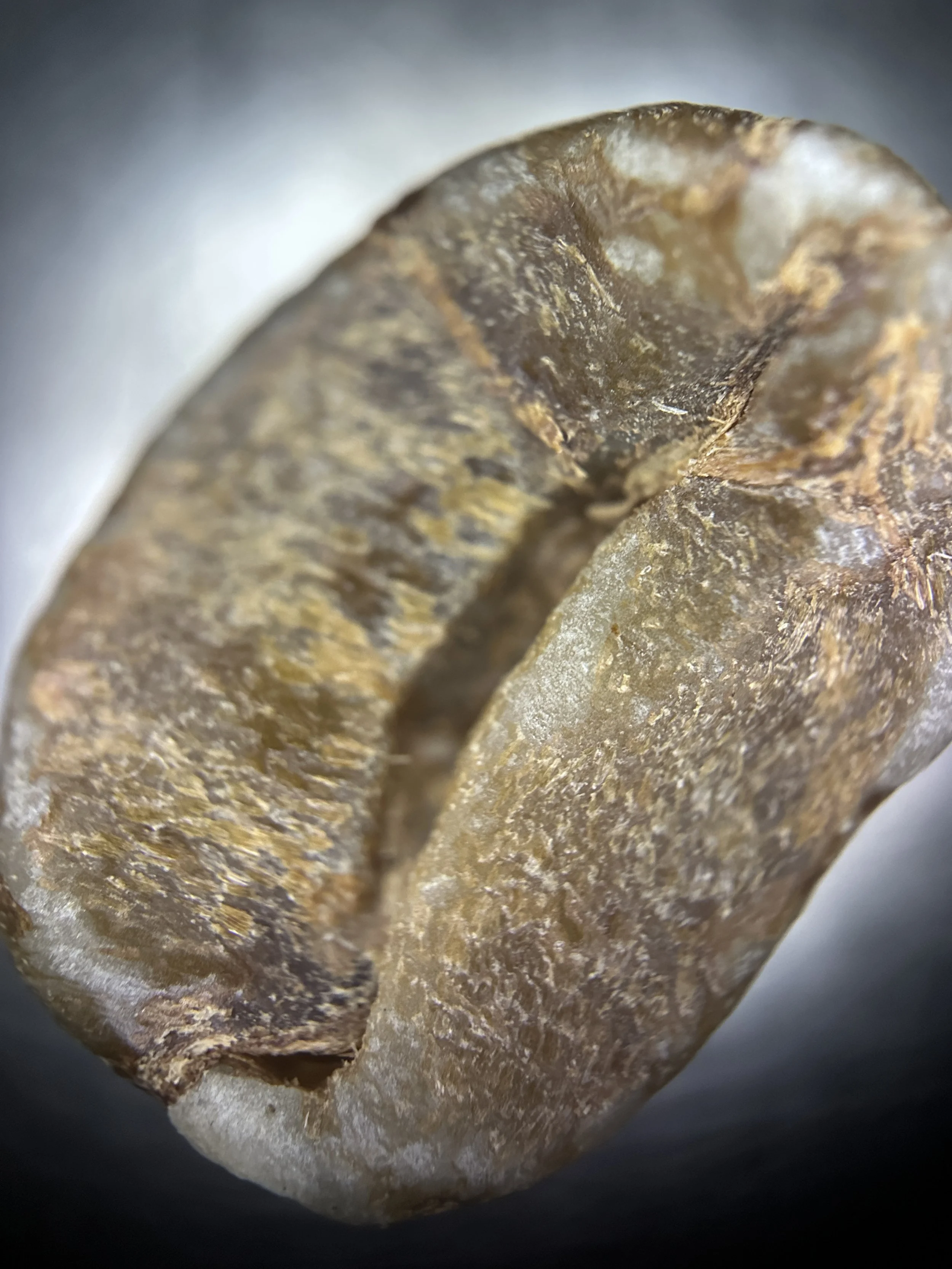Decoding Defects: Immature
Welcome to the very first of my Decoding Defects blog posts. This will be a series of blog posts diving into the intricate and interesting world of GREEN COFFEE DEFECTS. I’ve decided to start with this particular defect, not because it is the first or most impactful, but because I have a particular vendetta against this green coffee defect.
For beginners, I want to start the conversation by pulling various bits of information in from all over the place so we can get a general industry consensus. Then we can move from there into my contributions to this conversation.
Learn from others…
Also, for those who cannot be bothered to read through these quotes, just scroll down till you see TL;DR and I will give you an AI summary. I really would encourage you to tough it out though…
SCAA Arabica Green Coffee Defect Handbook:
“Defect Name: Immature bean
Other Names: Unripe, Quaker (when roasted)
SCAA Classification: Secondary Defect. 5 Immature beans = 1 full defect
Effect on Cup Quality: Varies. Generally imparts grassy, straw-like or greenish and is the main source of astringent flavors in coffee.
Other Issues: Impacts the apperance of roasted beans.
Causes: Agricultural. The Immature or unripe bean is not fully developed for several reasons, including improper picking of the untipe cherries, and uneven ripening on late ripening varieties groing at high altitude.”Specialty Coffee Association of America. Arabica Green Coffee Defect Handbook. Long Beach, CA: Specialty Coffee Association of America, 2004. Revised 2010.
Green Coffee: A guide for roasters and buyers by Chris Kornman:
“Quakers are acknowledged to be predominately the result of underripe coffee [immature beans/immature defect]. Underripe green seeds will often curl at the edges giving them a ‘boat-shaped’ apperance.” - pg 134
“There is another point of confusion for graders: quakers are only identifiable once the coffee has been roasted, and not all green coffee identified as underripe may result in a quaker. Conversely, not all quakers may be readily identifiable as underripe in prepped exportable green coffee.” - pg. 136
“The flavors attributed to quakers and underripe coffee tend to differ as well. A singular quaker may taint a sample and create inconsistencies from cup to cup on an evaluation table and elicit notes ranging from peanut or peanut skin to fatty and oily. However, underripe has been classically defined at the cupping table as harsh or rough, generally referring to an astringency accompanied by a fresh hay-like or grassy flavor.” - pg 136
Chris Kornman, Green Coffee: A Guide for Roasters and Buyers (London: Laurence King Publishing, 2021), 134, 136.
Dear Coffee Buyer - by Ryan Brown:
“Immature or underripe
Looks like: yellowish-green, pale and opaque, with strongly adhering, shiny silverskin; the bean often curves inward toward the flat side
Tastes like: dry, woody, and lacks sweetness
Why: inclusion of underripe cherries in the harvest
Avoid by: harvesting only ripe cherries, or by catching unripe cherries during flotation, density, or screen sorting of dried green.”Ryan Brown, Dear Coffee Buyer: A Guide to Sourcing Green Coffee (Portland, OR: [Self-published], 2018), 94.
Book of Roast Vol 1.
Detecting Defects: Plants and Quakers by Andi Trindle Mersch
“Quakers are more generically called immature beans, but the term quaker is used to identify immature beans that reveal themselves very specifically after roasting.”
“Quakers are a specific manifestation of immature beans. Most commonly, immature beans are caused by underripe picking (the picking of green, not yet fully developed, coffee cherries)…however, climactic and/or soil conditions and poor field care may also result in quakers.”
“In Nicaragua, according to Lexania Marín Gráiz, Star Cupper and consultant working throughout Nicaragua, immature beans —which may or may not result in quakers— are a frequent problem of poor fertalization.”
- pg 102
“Unfortunately, though, quakers cannot be detected by examining freen coffee and they may manifest sporadically in a coffee lot…”
“Gradíz agrees that quakers cannot be identified when examining green coffee, but, she states that she can sometimes predict the likelihood that quakers will exist when she notices a problem with immature beans in general.”
- pg 103
Andi Trindle Mersch, “Detecting Defects: Plants and Quakers,” in The Book of Roast: Volume 1, ed. Roast Magazine (Portland, OR: Roast Magazine, 2017), 102–103.
Coffee: Growing, Processing, Sustainable Production Ed. Jean Nicolas Wintgens
Immature bean (quaker bean)
“Description: Small ‘boat-shaped’ bean often with a wrinkled surface. Final color of beans ranges from a metallic green to dark green or almost black with a glossy silverskin, depending on the drying conditions. The bean has a very adherent silverskin. Cell walls and internal structure are not fully developed. The beans are smaller than mature beans.”
“Cause: Growing problems (drought, stress, fertilization, pests and diseases). Beans from cherries picked prior to ripening. Lower occurence for dry procesed cherries because immature cherries are partially removed by flotation, but higher with mechanically harvested Arabica. “
“Cup profile: Increased bitterness. Diminished aroma, flavor and acidity. Greenish character when can be perceived as a chemical off-flavor. They sometimes have a fermented taste.”
“Negative effect on cup quality: Medium to high.”
- Pg. 773
Jean Nicolas Wintgens, ed., Coffee: Growing, Processing, Sustainable Production (Weinheim: Wiley-VCH, 2004), 773.
TL;DR
Here is your Chat GPT (4o - because I am not a monster) Summary:
”Immature beans—often referred to as quakers when roasted—are underdeveloped coffee seeds primarily caused by the harvesting of underripe cherries or environmental stress during growth. These beans are typically pale, yellowish-green, boat-shaped, and exhibit a tightly adhering silverskin. Though present in green coffee, quakers are only reliably identifiable after roasting due to their distinctive color and effect on cup quality.Cupping descriptors for immature or quaker-tainted coffee include grassy, hay-like, astringent, peanut skin, woody, or fermented notes. Their impact ranges from subtle inconsistencies to significant negative effects on aroma, acidity, and flavor. While floatation and density sorting may help remove some immature beans, full prevention depends on selective harvesting and optimal agricultural practices. Graders face challenges in distinguishing quakers visually in green form, making post-roast assessment essential.”
Elephants in rooms
So, first we need to talk about a few things that the Authors cited above talk about, namely, that an Immature/Unripe/Underripe bean as a green coffee defect is not the same thing as a quaker/Quaker.
I find it super interesting how in many of the instances older literature (SCAA Handbook, and Coffee: Growing, Processing, Sustainable Production, for example) use the names immature and quaker as if they are the same thing… yet we see no direct connection between immature beans and quakers in count re: the final cup. I’ve always found this relationship… or lack thereof to be extremely frustrating.
In addition, the SCAA / CQI green assessment says (or said) that Specialty green coffee can have up to 5 secondary defects (5 immature = 1 defect… so 5x5=25) or 25 immature beans in a 350 gram sample, but must have NO quakers in a 100g roasted sample.
So… what’s going on!?
Let’s Talk Quakers
I want to first deviate from talking about “green coffee defects” to discuss quakers. I think it’s important because of this supposed loose link between immature coffee beans and quakers… so lets go.
I want everyone to take time to read through this scientific journal article:
Rabelo, Mariane Helena Sances, Flávio Meira Borém, Renato Ribeiro de Lima, Ana Paula de Carvalho Alves, Ana Carla Marques Pinheiro, Diego Egídio Ribeiro, Cláudia Mendes dos Santos, and Rosemary Gualberto Fonseca Alvarenga Pereira. “Impacts of Quaker Beans over Sensory Characteristics and Volatile Composition of Specialty Natural Coffees.” Food Chemistry 342 (2021): 128304. https://doi.org/10.1016/j.foodchem.2020.128304.
In this article, the authors are saying a few things that I think are important.
The 1 quaker per 100 gram roasted sample DQ from “Specialty Coffee” is BS (my words…)
Their studies have shown that it takes ~ 10.8% by weight of quakers to cause a coffee to score below 80 points (threshold for Specialty Coffee by the old 2004 SCA/CQI assessment form).
Lower thresholds of quakers are still perceptible, but do not disqualify it as a specialty coffee.
“Through the analysis of volatile composition, it was possible to conclude that the Quaker bean is a roasted immature bean. This conclusion was possible because the volatile compounds present in the Quaker bean are compounds formed during the roasting process from precursors present in raw beans from immature harvested fruits.” - pg. 9
So, this study, which I think is crucial, seeks to challenge presuppositions as to what we define as Specialty Coffee when looking at the green grading process, and looking at 100g roasted samples. It also clarifies the seemingly disjointed nature in which we’ve talked about quakers and immature/unripe beans. We may be able to say all quakers were immature beans, but not all immature beans become quakers.
Framing the conversation so far:
I want to start by saying that I 100% agree. Having a standard where one quaker (which a producer cannot even see to remove) in a 100-gram roasted sample disqualifies the coffee as “Specialty Green Coffee” is ludicrous. I can also see how this standard has likely been wielded against coffee producers worldwide to force them to reduce their prices relative to the C market. I would concur with the authors of this paper that, let’s say, 10-11% presence of quakers by weight is much fairer to the coffee producers. Unsurprisingly, the research was done in Brazil, a coffee-producing country that has a lot riding on this change. I am not saying that makes me suspicious of their findings; rather, I am saying that we’ll notice that the scientific communities in the countries that typically have power in the buying arrangement weren’t rushing off to try and change the standard. Just saying.
Anyhow, moving on from changing the standard, other important things came out of the study. One of them being a scientific link between immature coffees and quakers. This means that, despite no citations in some of the literature, they correctly understood the general idea. Better, of course, to share rationale or evidence ahead of time, but we got there. Some immature beans lead to quakers, some do not. But there seems to be evidence from multiple authors (and this is in line with my experience) that even if an immature coffee bean does not turn into a quaker, it has a detrimental impact on the flavor of the finished cup. The flavor characteristics seem to be green/grassy and astringent. It’s possible that they are not as impactful as a quaker would be, but they are still negatively impacting the cup.
Another thing I want to touch on here is that, as this is an agricultural product, I would suggest thinking of this in less “black-and-white” terms and more of a gradation. There will be varying degrees of immaturity in coffee, and there will be varying degrees of quaker-ness in coffee. It’s just the reality of dealing with an agricultural product, and we need to be able to hold all of these truths and nuances.
So, we must look for immature beans, as well as quakers, in the roasted product. It is then crucial for us to apply a framework that helps us understand potential quality issues as well as fairly assess the true value of the coffee in a way that doesn’t hold power over our producing partners. So… what do immature beans look like, and how can I search for them?
Identifying Immature Coffees:
I find the general descriptions that the authors used, cited above, to be an excellent summary of what they look like, though I want to add some quick caveats. The general description I would go with would be: curved inward toward the center-cut, tight clinging silverskin, tight or void center-cut.
ꜛAbove is an excellent example of a quintessential immature bean. It is slightly smaller than the normal green coffee beans. It is vibrant green in color. The bean is curved in on itself slightly. The silverskin is adhered tightly, and the center cut looks smushed. However, something that I think holds people back in identification is that they assume it has to be this unreal green color, or they assume that it has to be significantly smaller than the other coffee beans.
ꜛAbove is another excellent example of an immature bean; this one is slightly less green in color, and the center cut is open.
ꜛAbove is another example of an immature bean. On this one, the silverskin is slightly discolored toward brown (not a sour defect, though, as the coffee beneath the silverskin is fine). It has a curved shape (“boat-like”), tight clinging silverskin, and a void center cut.
This bean is curved inward and has tight clinging silverskin. It is about normal size and not overtly green. I would still classify it as immature.
Practical Application
If you want to see real life examples of me sorting out this defect, you’ll have to join the mentorship group. I’m carrying on the conversation over there. Community+Forum or Full Mentorship will get you access. There is also where I’ll be carrying on the discussion in the comments.






